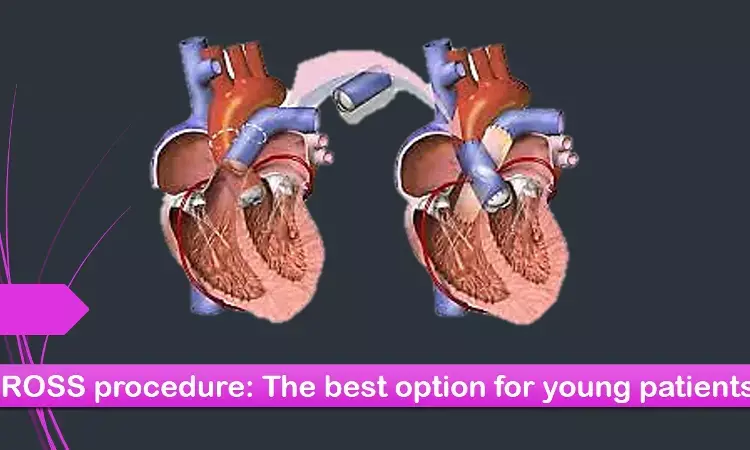- Home
- Medical news & Guidelines
- Anesthesiology
- Cardiology and CTVS
- Critical Care
- Dentistry
- Dermatology
- Diabetes and Endocrinology
- ENT
- Gastroenterology
- Medicine
- Nephrology
- Neurology
- Obstretics-Gynaecology
- Oncology
- Ophthalmology
- Orthopaedics
- Pediatrics-Neonatology
- Psychiatry
- Pulmonology
- Radiology
- Surgery
- Urology
- Laboratory Medicine
- Diet
- Nursing
- Paramedical
- Physiotherapy
- Health news
- Fact Check
- Bone Health Fact Check
- Brain Health Fact Check
- Cancer Related Fact Check
- Child Care Fact Check
- Dental and oral health fact check
- Diabetes and metabolic health fact check
- Diet and Nutrition Fact Check
- Eye and ENT Care Fact Check
- Fitness fact check
- Gut health fact check
- Heart health fact check
- Kidney health fact check
- Medical education fact check
- Men's health fact check
- Respiratory fact check
- Skin and hair care fact check
- Vaccine and Immunization fact check
- Women's health fact check
- AYUSH
- State News
- Andaman and Nicobar Islands
- Andhra Pradesh
- Arunachal Pradesh
- Assam
- Bihar
- Chandigarh
- Chattisgarh
- Dadra and Nagar Haveli
- Daman and Diu
- Delhi
- Goa
- Gujarat
- Haryana
- Himachal Pradesh
- Jammu & Kashmir
- Jharkhand
- Karnataka
- Kerala
- Ladakh
- Lakshadweep
- Madhya Pradesh
- Maharashtra
- Manipur
- Meghalaya
- Mizoram
- Nagaland
- Odisha
- Puducherry
- Punjab
- Rajasthan
- Sikkim
- Tamil Nadu
- Telangana
- Tripura
- Uttar Pradesh
- Uttrakhand
- West Bengal
- Medical Education
- Industry
Ross procedure best option for young adults requiring aortic valve replacement: JAMA

According to recent research, it has been found out that Ross Procedure gives effective long-term clinical and echocardiographic outcomes in young and middle-aged adults who require aortic valve replacement, as punlished in the JAMA Cardiology Network.
There is no ideal valve substitute for young adults requiring aortic valve replacement. Multicenter data supporting use of the Ross procedure with respect to long-term postoperative valve–related mortality and reintervention, as well as function of the autograft and pulmonary homograft, are needed.
Therefore, Jamie L. R. Romeo and colleagues from the Department of Cardio-Thoracic Surgery Erasmus Medical Centre, Rotterdam, the Netherlands carried out this study with the sole objective to To determine the long-term clinical and echocardiographic outcomes in young and middle-aged patients undergoing the Ross procedure.
The authors conducted a retrospective multicenter international cohort study with a median follow-up period of 9.2 years in 5 experienced centers regularly performing the Ross procedure. Consecutive patients aged 18 to 65 years were included. Serial echocardiographic measurements of valve function were analyzed using mixed-effects modeling.
The results showed that-
a. During the study period, 1431 patients (74.3% men; n = 1063) were operated on at a median age of 48.5 years (mean [SD], 47.7 [9.5]; range, 18.1-65; interquartile range, 42.7-54.0).
b. Implantation techniques were root inclusion in 355 (24.9%), root replacement in 485 (34.0%), and subcoronary implantation in 587 (41.1%).
c. Right ventricular outflow tract reconstruction was performed with homografts in 98.6% (n = 1189) and bioprostheses in 1.4% (n = 17).
d. Ten patients (0.7%) died before discharge.
e. Median follow-up was 9.2 years (13 015 total patient-years).
f. Survival after 10 and 15 years was 95.1% (95% CI, 93.8%-96.5%) and 88.5% (95% CI, 85.9%-91.1%), respectively.
g. Freedom from autograft and homograft reintervention after 15 years was 92.0% and 97.2%, respectively. Late events were autograft endocarditis in 14 patients (0.11% per patient-year), homograft endocarditis in 11 patients (0.08% per patient-year), and stroke in 37 patients (0.3% per patient-year).
Hence, the authors concluded that "Given its excellent short-term and long-term outcome in young and middle-aged adults in this study, the Ross procedure should be considered in young and middle-aged adults who require aortic valve replacement."
Patients should be referred to an experienced center with a program dedicated to the Ross procedure, they further added.
Dr. Nandita Mohan is a practicing pediatric dentist with more than 5 years of clinical work experience. Along with this, she is equally interested in keeping herself up to date about the latest developments in the field of medicine and dentistry which is the driving force for her to be in association with Medical Dialogues. She also has her name attached with many publications; both national and international. She has pursued her BDS from Rajiv Gandhi University of Health Sciences, Bangalore and later went to enter her dream specialty (MDS) in the Department of Pedodontics and Preventive Dentistry from Pt. B.D. Sharma University of Health Sciences. Through all the years of experience, her core interest in learning something new has never stopped. She can be contacted at editorial@medicaldialogues.in. Contact no. 011-43720751
Dr Kamal Kant Kohli-MBBS, DTCD- a chest specialist with more than 30 years of practice and a flair for writing clinical articles, Dr Kamal Kant Kohli joined Medical Dialogues as a Chief Editor of Medical News. Besides writing articles, as an editor, he proofreads and verifies all the medical content published on Medical Dialogues including those coming from journals, studies,medical conferences,guidelines etc. Email: drkohli@medicaldialogues.in. Contact no. 011-43720751


